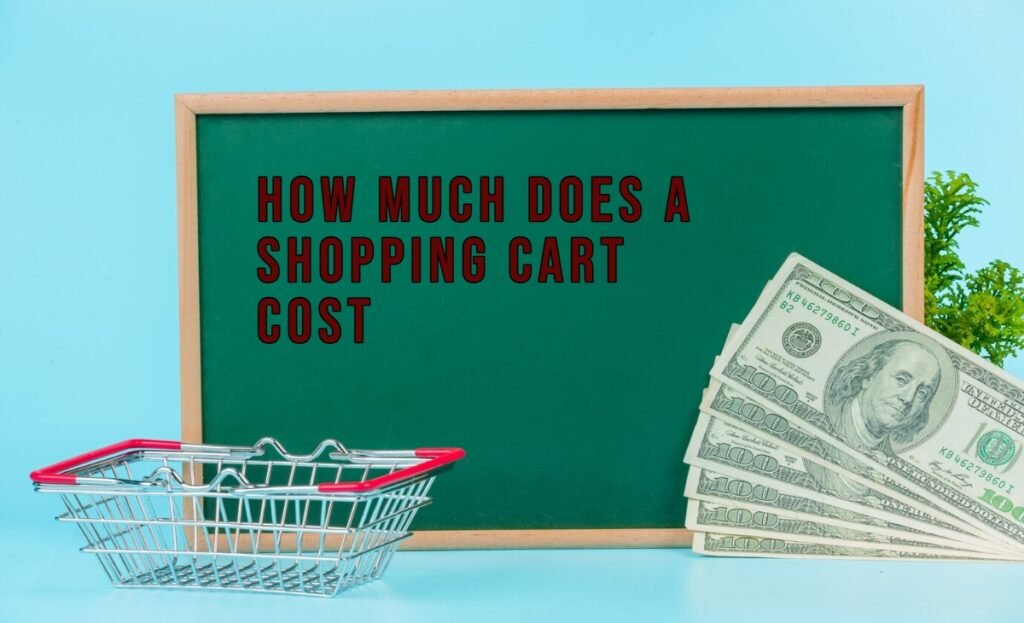How Much Does a Shopping Cart Cost in 2024?

devsdash
In the ever-evolving world of digital commerce and retail, one fundamental question keeps popping up for both newcomers and seasoned entrepreneurs: how much does a shopping cart cost? The answer, as you might expect, is layered. With the rise of online stores and the continued demand for physical retail, the definition of “shopping cart” has expanded dramatically. Whether you’re asking about a literal cart in a brick-and-mortar store or the virtual carts in eCommerce software, the pricing can vary widely.
Before diving into exact figures and options, it’s vital to understand that the cost of a shopping cart depends on various factors. These include its type, features, scalability, customization needs, platform compatibility, and user experience enhancements. Choosing the right solution isn’t just about affordability — it’s about investing in efficiency, growth, and customer satisfaction.
The Importance of Understanding Shopping Cart Costs
As a small business owner or startup, you may initially overlook the significance of budgeting correctly for a shopping cart solution. Yet, it can become one of the most critical decisions you make. An inefficient or outdated cart can drive customers away. On the flip side, a well-designed and responsive cart enhances the buyer journey and boosts conversions.
Today’s consumers expect a smooth experience from the moment they enter your store to checkout. If your cart system lacks essential features — like mobile responsiveness, real-time inventory updates, or multiple payment options — your customer could abandon their cart and shop elsewhere.
Types of Shopping Carts and Their Cost Ranges
The term “shopping cart” covers several categories. Let’s break it down into two main types: physical carts and digital eCommerce carts. Each has its own pricing spectrum and associated benefits.
Physical Shopping Carts
If you’re running a retail or grocery store, physical shopping carts are still very much a necessity. The cost for these depends on the size, material, customization, and volume of purchase.
Standard Wire Shopping Cart (metal): These typically cost between $90 to $150 per unit.
Plastic Hybrid Cart: More modern and lightweight, these can go for $130 to $200 each.
Mini Carts (ideal for smaller stores): Priced around $70 to $110 per unit.
Smart Shopping Carts: Equipped with screens, barcode scanners, and navigation, these cost $5,000 to $10,000 per unit.
Don’t forget additional costs like shipping, storage, maintenance, and replacement parts. Some stores opt for cart rental or leasing programs to reduce upfront costs.
Digital Shopping Carts (eCommerce Software)
When launching an online store, the shopping cart is more than just a “basket” where customers drop items. It involves backend systems, checkout pages, inventory sync, security protocols, tax calculators, shipping estimators, and so much more.
Open-source carts (e.g., WooCommerce, Magento Open Source):
Typically free to download.
Hosting costs: $10–$50/month.
Maintenance and customization: $500–$5,000 (one-time or ongoing).
Ideal for developers or those with technical support teams.
Hosted solutions (e.g., Shopify, BigCommerce):
Monthly fees range from $29 to $299+.
Add-ons and themes: $10–$300+.
Transaction fees: 0–2% based on the plan.
Custom-built carts (enterprise-level):
Can range between $5,000 and $100,000+.
Maintenance, scaling, updates, and integrations add recurring costs.
Perfect for large brands or unique eCommerce models.
Key Factors Affecting the Cost of Shopping Carts
Whether you’re in a physical or digital retail environment, many variables influence how much a shopping cart will ultimately cost. These include:
Materials and Build Quality: For physical carts, higher durability means higher cost but longer lifespan.
Customization: Branding, special features, or unique designs will add to the expense.
Add-ons and Integrations: Digital carts often require plugins for payments, analytics, CRM, or marketing.
User Experience Design: A seamless interface is critical and often involves designer fees or premium templates.
Security Features: Especially in online carts, where SSL, fraud detection, and GDPR compliance are essential.
Mobile Compatibility: More than 50% of eCommerce traffic is mobile — a responsive cart is mandatory.
Platform Dependency: Costs vary depending on whether the cart is tied to WordPress, Shopify, Magento, etc.
The Real Cost: Upfront vs. Long-Term Investment
It’s easy to fixate on initial costs. But long-term value matters more. Cheaper carts may seem tempting, yet they might not offer scalability or adequate support. For instance, saving $20/month on an eCommerce platform might cost you thousands in lost conversions if the cart is slow or buggy.
Long-term costs include:
Maintenance and updates
Technical support or developer retainers
Third-party services
Data migration (if switching platforms)
Why Customization Often Drives Up Cost
Business owners often start with out-of-the-box solutions. But as needs evolve, customization becomes inevitable. Whether it’s modifying the cart design, altering checkout flows, or integrating new tools — customizations increase the total spend.
Even physical carts may need custom branding, child seats, electronic locking systems, or nesting compatibility. These enhancements, while valuable, come with added costs.
Cloud-Based vs. Self-Hosted Shopping Carts
Hosted platforms offer convenience and predictable pricing. However, they may limit your control or charge extra for additional users or bandwidth. Conversely, self-hosted carts give you more freedom but require technical know-how and security oversight.
Cloud-based (Shopify, Wix, Squarespace): Easy setup, support included, but ongoing monthly fees.
Self-hosted (Magento, WooCommerce): Flexibility and control, but you’re responsible for everything from uptime to updates.
Is There a One-Size-Fits-All Shopping Cart?
Absolutely not. Your business model, customer expectations, and growth goals all dictate what shopping cart works for you. For a lean startup, WooCommerce might be perfect. A fast-scaling drop shipping brand may prefer Shopify. Meanwhile, a multinational conglomerate might need a custom cart integrated with ERPs and logistics tools.
How to Choose the Right Shopping Cart
Start by asking yourself:
What is your monthly budget?
Do you plan to scale aggressively?
Do you need multiple payment methods or international shipping?
Will you manage inventory manually or automate it?
Do you have access to tech support or developers?
The answers will guide you toward either an affordable off-the-shelf solution or a premium cart tailored to your exact needs.
Shopping Cart Cost Breakdown Example
Let’s suppose you’re launching a mid-sized online boutique. Here’s a rough budget outline:
Shopify Plan: $79/month
Premium Theme: $180 (one-time)
Custom Add-ons: $500–$1,000
SSL Certificate: Included
Developer Support (monthly): $300–$500
Payment Gateway Fees: 2.9% + 30¢ per transaction
Annual total: $2,000–$4,000, depending on customization and sales volume.
How Much Does a Shopping Cart Cost?
To summarize, the answer to how much does a shopping cart cost depends largely on your specific needs. While you can get a physical cart for under $100 or launch an online cart for under $50/month, the real value lies in choosing a solution that fits your goals and grows with your business.
Conclusion
Whether you’re selling apples or apparel, understanding the cost of a shopping cart — both literal and digital — is a crucial step in running a successful retail or eCommerce operation. While price matters, value matters more. Select a cart that balances affordability, functionality, and growth potential. And remember, the best shopping cart is the one that helps your customers check out with a smile.







